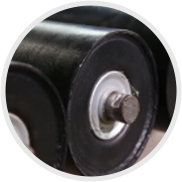 Afrikaans
Afrikaans  Albanian
Albanian  Amharic
Amharic  Arabic
Arabic  Armenian
Armenian  Azerbaijani
Azerbaijani  Basque
Basque  Belarusian
Belarusian  Bengali
Bengali  Bosnian
Bosnian  Bulgarian
Bulgarian  Catalan
Catalan  Cebuano
Cebuano  Corsican
Corsican  Croatian
Croatian  Czech
Czech  Danish
Danish  Dutch
Dutch  English
English  Esperanto
Esperanto  Estonian
Estonian  Finnish
Finnish  French
French  Frisian
Frisian  Galician
Galician  Georgian
Georgian  German
German  Greek
Greek  Gujarati
Gujarati  Haitian Creole
Haitian Creole  hausa
hausa  hawaiian
hawaiian  Hebrew
Hebrew  Hindi
Hindi  Miao
Miao  Hungarian
Hungarian  Icelandic
Icelandic  igbo
igbo  Indonesian
Indonesian  irish
irish  Italian
Italian  Japanese
Japanese  Javanese
Javanese  Kannada
Kannada  kazakh
kazakh  Khmer
Khmer  Rwandese
Rwandese  Korean
Korean  Kurdish
Kurdish  Kyrgyz
Kyrgyz  Lao
Lao  Latin
Latin  Latvian
Latvian  Lithuanian
Lithuanian  Luxembourgish
Luxembourgish  Macedonian
Macedonian  Malgashi
Malgashi  Malay
Malay  Malayalam
Malayalam  Maltese
Maltese  Maori
Maori  Marathi
Marathi  Mongolian
Mongolian  Myanmar
Myanmar  Nepali
Nepali  Norwegian
Norwegian  Norwegian
Norwegian  Occitan
Occitan  Pashto
Pashto  Persian
Persian  Polish
Polish  Portuguese
Portuguese  Punjabi
Punjabi  Romanian
Romanian  Russian
Russian  Samoan
Samoan  Scottish Gaelic
Scottish Gaelic  Serbian
Serbian  Sesotho
Sesotho  Shona
Shona  Sindhi
Sindhi  Sinhala
Sinhala  Slovak
Slovak  Slovenian
Slovenian  Somali
Somali  Spanish
Spanish  Sundanese
Sundanese  Swahili
Swahili  Swedish
Swedish  Tagalog
Tagalog  Tajik
Tajik  Tamil
Tamil  Tatar
Tatar  Telugu
Telugu  Thai
Thai  Turkish
Turkish  Turkmen
Turkmen  Ukrainian
Ukrainian  Urdu
Urdu  Uighur
Uighur  Uzbek
Uzbek  Vietnamese
Vietnamese  Welsh
Welsh  Bantu
Bantu  Yiddish
Yiddish  Yoruba
Yoruba  Zulu
Zulu Exploring the Impact of Lagged Head Pulley on Conveyor System Efficiency
The Importance of Lagged Head Pulley in Conveyor Systems
In modern manufacturing and material handling industries, the efficient transportation of goods from one location to another is critical for operational success. One often-overlooked component of conveyor systems that plays a pivotal role in this process is the lagged head pulley. This article explores the significance, functionality, and advantages of using lagged head pulleys in conveyor belt systems.
Understanding the Lagged Head Pulley
A head pulley is the terminal pulley located at the discharge end of a conveyor belt system. It is responsible for driving the belt and delivering the material transported. When we refer to a lagged head pulley, we are talking about a pulley that has been covered with a material designed to enhance friction and grip. This lagging can be made from materials such as rubber, ceramic, or other composite materials that improve performance under different operational conditions.
Functionality of Lagged Head Pulleys
The primary function of a lagged head pulley is to ensure the effective movement of the conveyor belt while minimizing slippage. The added friction created by the lagging material helps in transmitting the torque necessary for driving the belt. This is particularly important in applications where heavy loads are transported, as slippage can lead to inefficiencies and increased wear on both the pulley and the belt.
Additionally, lagged head pulleys are designed to handle various environmental challenges. For instance, in wet or slippery conditions, the increased friction provided by the lagging helps maintain consistent performance, preventing costly downtimes.
Advantages of Using Lagged Head Pulleys
lagged head pulley

1. Enhanced Grip and Efficiency One of the primary advantages of lagged head pulleys is their ability to enhance grip on the conveyor belt. This improvement results in higher efficiency in transporting materials, as the system can handle heavier loads without the risk of slippage.
2. Extended Equipment Life By reducing slippage and the resultant wear on components, lagged head pulleys can significantly extend the lifespan of the conveyor system. This leads to less frequent replacement of parts and lowers maintenance costs.
3. Versatility Lagged head pulleys can be used in various applications across different industries. Whether in mining, agriculture, or manufacturing, their adaptability makes them a preferred choice for many conveyor system designs.
4. Safety Increased grip reduces the likelihood of material spillage, which can pose safety hazards in the workplace. By ensuring that materials remain on the conveyor belt, lagged head pulleys contribute to a safer working environment.
5. Coping with Environmental Factors Lagged pulleys are also designed to withstand harsh conditions such as extreme temperatures, moisture exposure, and abrasive materials. This durability ensures reliable performance in diverse environments.
Conclusion
In conclusion, lagged head pulleys play an essential role in enhancing the functionality and reliability of conveyor systems. Their ability to provide greater grip, reduce wear, and handle multiple operational challenges makes them invaluable in various industries. As manufacturers continue to innovate and push for greater efficiency in logistics and material handling, the significance of tailored components like lagged head pulleys will only continue to grow. By investing in quality lagged pulleys, companies can ensure their conveyor systems operate at peak performance, thus optimizing their productivity and safety standards.
-
Revolutionizing Conveyor Reliability with Advanced Rubber Lagging PulleysNewsJul.22,2025
-
Powering Precision and Durability with Expert Manufacturers of Conveyor ComponentsNewsJul.22,2025
-
Optimizing Conveyor Systems with Advanced Conveyor AccessoriesNewsJul.22,2025
-
Maximize Conveyor Efficiency with Quality Conveyor Idler PulleysNewsJul.22,2025
-
Future-Proof Your Conveyor System with High-Performance Polyurethane RollerNewsJul.22,2025
-
Driving Efficiency Forward with Quality Idlers and RollersNewsJul.22,2025





























